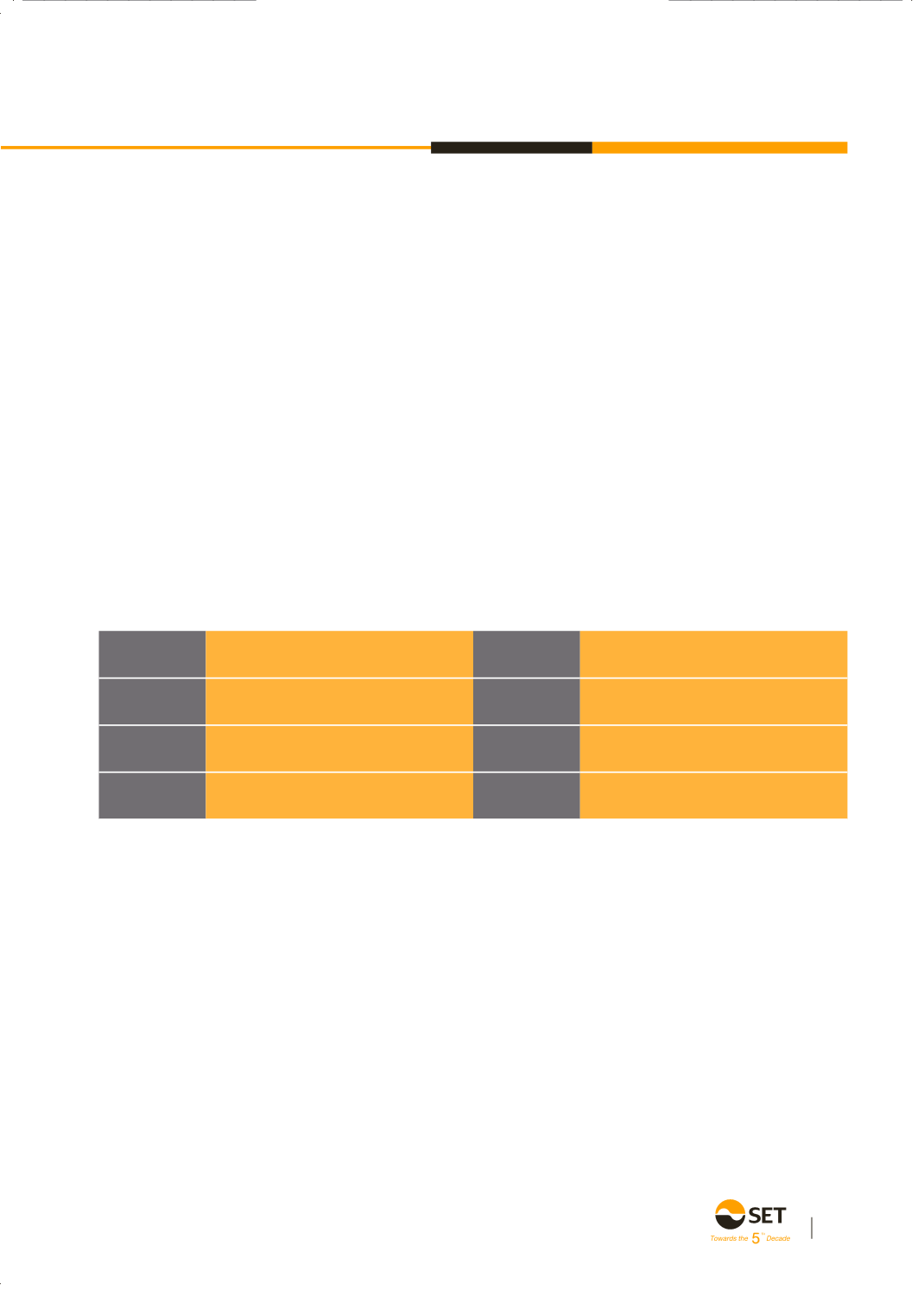

69
Board assessment
The BoG assesses its own performance at least once a year,
to review the performance, including problems and difficulties
to enhance working efficiency, supporting CG practices.
1. Process for Evaluating the Board of Governors
The SET’s Board of Governors approved the performance
evaluation to assess the Board of Governors by determining the
scope of assigned duties and responsibilities of the governors
in accordance with the principles of good corporate governance.
This task was assigned to the Corporate Governance and Social
Responsibility Committee to advise the SET Board of Governors
on the performance evaluation process. This process includes
presenting a summary of the assessment with recommendations
to the Board of Governors. This is in line with the role of the
Corporate Governance and Social Responsibility Committee as
defined in its charter. SET has also consulted with qualified
external experts with expertise and experience on CG in order
to get their opinions and suggestions on the BoG’s performance
evaluation process.
2. Models for the performance evaluation of the Board
of Governors
In 2015, the SET Board of Governors considered five types
of evaluation: (1) Performance evaluation of the board as a
whole (2) Individual self-evaluation (3) Individual assessment
by other board members (4) Evaluation of the Chairman’s
performance and (5) Assessment of the skills, knowledge and
abilities of the board members. The details are as follows:
1) The criteria for assessment of the BoG as a whole were classified into eight sections:
Section 1
Strategy and business planning
Section 5
Delegation of authority
Section 2
Risk management and internal control
Section 6
The BoG’s readiness for meetings
Section 3
Conflicts of interest
Section 7
Meetings
Section 4
Corporate governance
Section 8
Assessment and succession planning
for executives
“In 2015, the BoG’s average score on 8 sections was
4.55 / 5.00, or 91%”.
Most governors agreed that the BoG
regularly monitored the risk management such as requiring that
the management submit the risk status report to the BoG on a
quarterly basis, etc. The BoG had mutual trust and could openly
express their views and not being dominated by any governor.
In addition, regularly provided educational enhancement courses
for govornors.
2) The criteria for self-assessment of individual directors
were classified into four sections: 1. Duties and
responsibilities of the Board 2. Meetings 3. Independence
and 4. Self-development of governor.
In2015, the overall assessment score for the four sectionswas
4.76 / 5.00, or 95%.
3) The criteria for assessment of individual directors by
peers were classified into four sections as previously mentioned
for direct comparison. In 2015, the overall assessment result
for the four areas was 4.81 / 5.00, or 96%.
4) The criteria for assessment of the chairman included
the aspects on encouraging all governors to actively
air their views in BoG meetings, making prudent
decisions, and encouraging each governor to review the BoG
minutes carefully before endorsing them. The Chairman of
the Corporate Governance and Social Responsibility Committee
reported the result directly to the chairman.


















